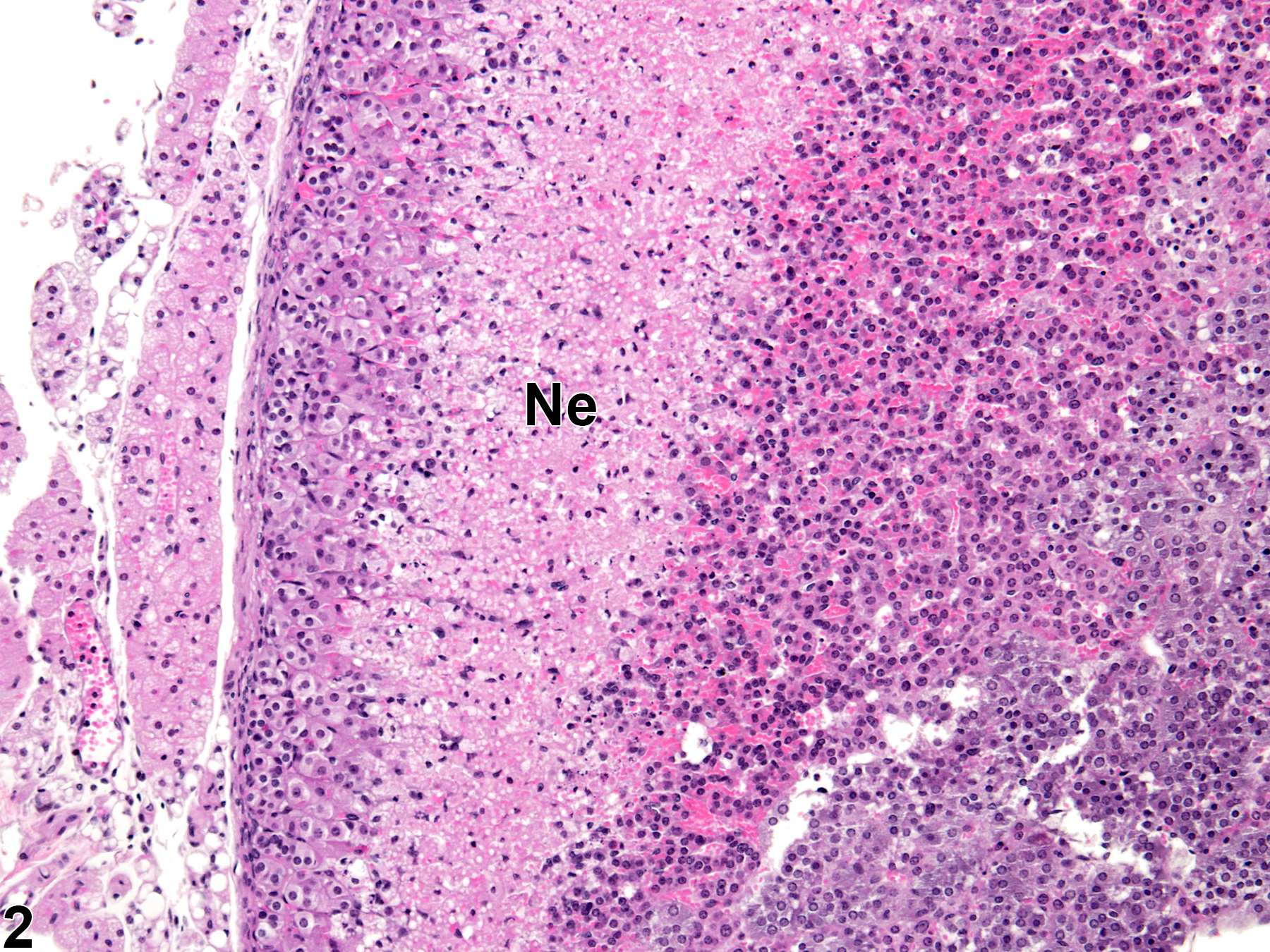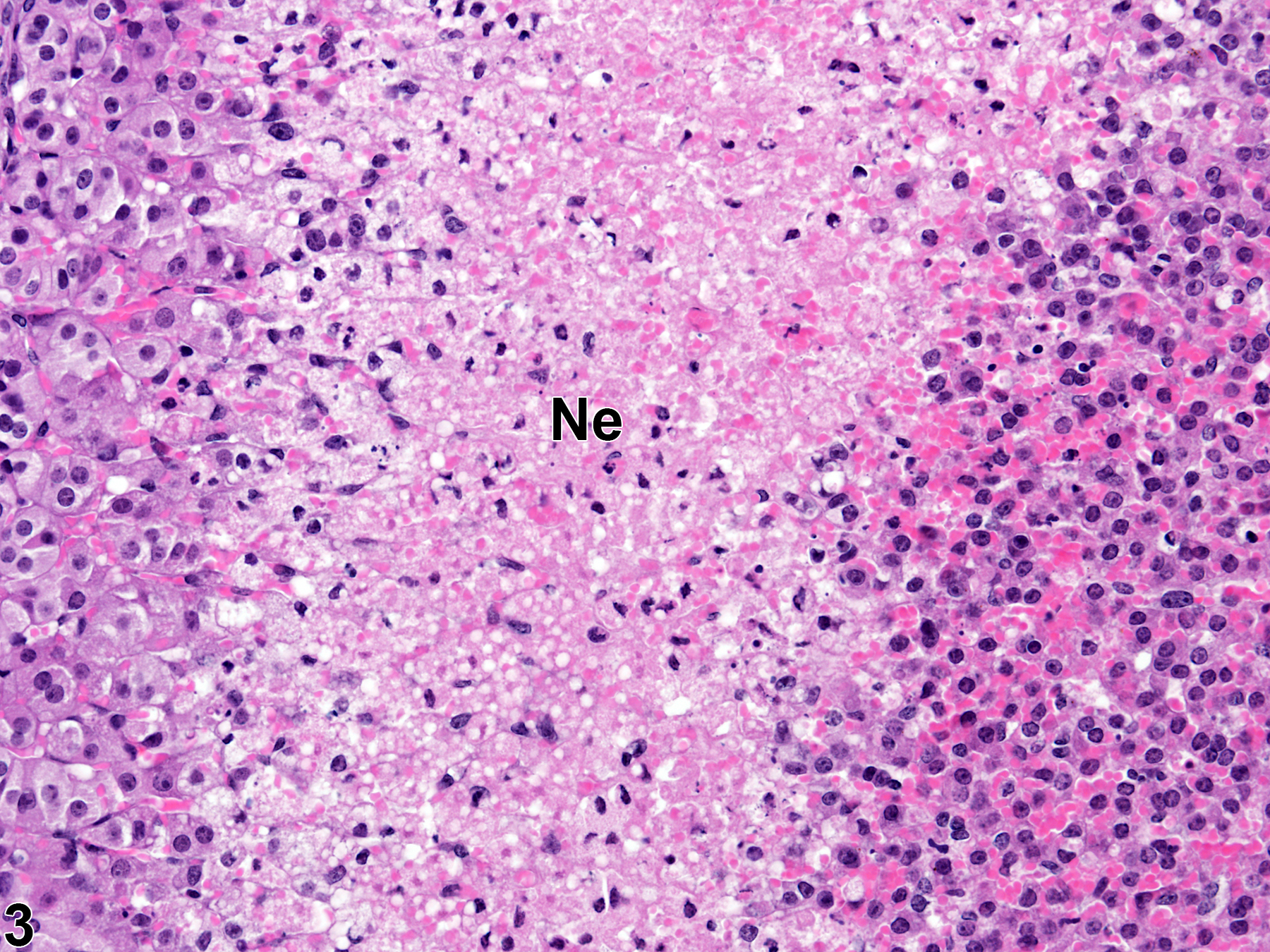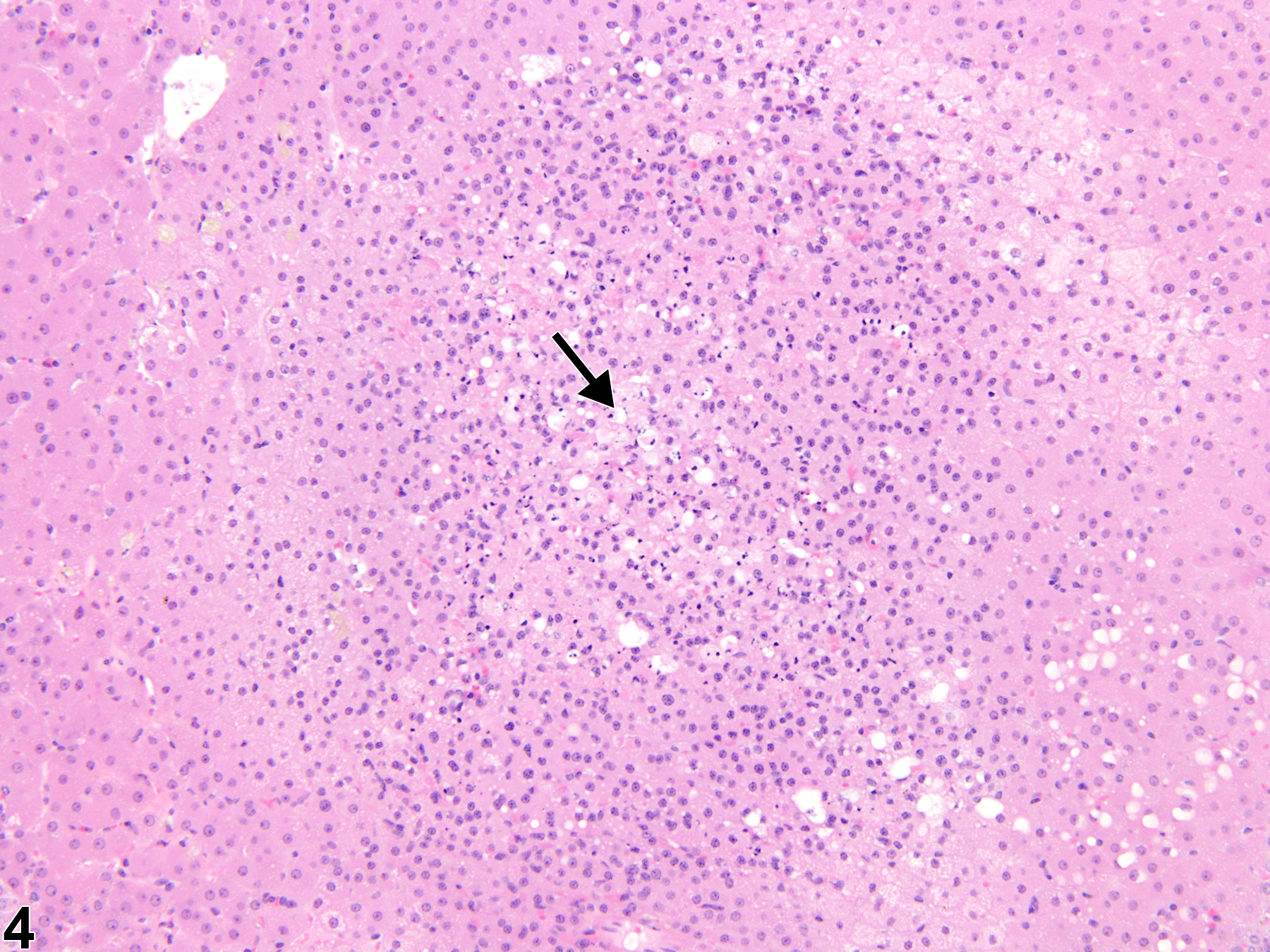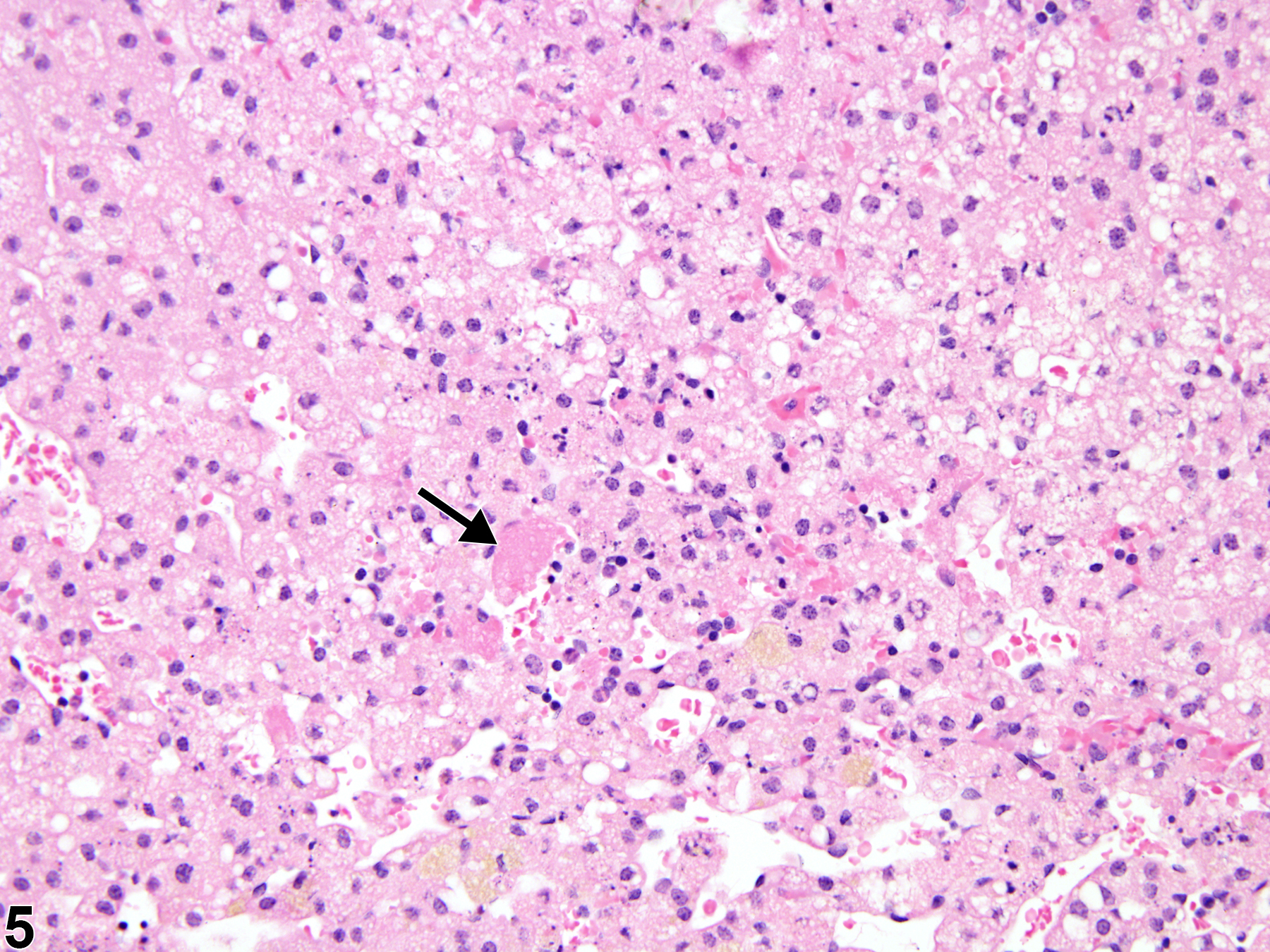Endocrine System
Adrenal Gland - Necrosis
Narrative
Adrenal gland necrosis (especially cortical) is usually secondary to other pathologic processes, such as stress, ischemia, hemorrhage, inflammation, and systemic neoplasia (e.g., mononuclear cell leukemia in rats). However, adrenal cortical necrosis can also be induced by experimental administration of various agents, such as bacterial toxins or certain exogenous chemicals. Adrenal medullary necrosis, though less common, can also be induced by certain exogenous chemicals.
Chen-Pan C, Pan I-J, Yamamoto Y, Sakogawa T, Yamada J, Hayashi Y. 1999. Prompt recovery of damaged adrenal medulla induced by salinomycin. Toxicol Pathol 27:563-572.
Full Text: http://tpx.sagepub.com/content/27/5/563.full.pdfFrith CH, Botts S, Jokinen MP, Eighmy JJ, Hailey JR, Morgan SJ, Chandra M. 2000. Non-proliferative lesions of the endocrine system in rats, E-1. In: Guides for Toxicologic Pathology. STP/ARP/AFIP, Washington, DC.
Full Text: https://www.toxpath.org/docs/SSNDC/EndocrineNonprolifRat.pdfHamlin MH, Banas DA. 1990. Adrenal gland. In: Pathology of the Fischer Rat: Reference and Atlas (Boorman GA, Eustis SL, Elwell MR, Montgomery CA, MacKenzie WF, eds). Academic Press, San Diego, 501-518.
Abstract: https://www.ncbi.nlm.nih.gov/nlmcatalog/9002563National Toxicology Program. 2010. NTP TR-558. Toxicology and Carcinogenesis Studies of 3,3',4,4'-Tetrachloroazobenzene (TCAB) [CAS No. 14047-09-7] in Harlan Sprague-Dawley Rats and B6C3F1 Mice (Gavage Studies). NTP, Research Triangle Park, NC.
Abstract: https://ntp.niehs.nih.gov/go/33564National Toxicology Program. 3011. NTP TR-564. Toxicology and Carcinogenesis Studies of 1-Bromopropane (CAS No. 106-94-5) in F344/N Rats and B6C3F1 Mice (Inhalation Studies).
Abstract: https://ntp.niehs.nih.gov/go/34854Nyska A, Maronpot RR. 1990. Adrenal gland. In: Pathology of the Mouse: Reference and Atlas (Maronpot RR, Boorman GA, Gaul BW, eds). Cache River Press, Vienna, IL, 509-536.
Rosol TJ, Yarrington JT, Latendresse J, Capen CC. 2001. Adrenal gland: Structure, function, and mechanisms of toxicity. Toxicol Pathol 29:41-48.
Abstract: https://www.ncbi.nlm.nih.gov/pubmed/11215683Rushing GD, Britt RC, LD Britt. 2006. Effects of hemorrhagic shock on adrenal response in a rat model. Ann Surg 243:652-656.
Abstract: https://www.ncbi.nlm.nih.gov/pubmed/16633000Szabo S, Lippe IT. 1989. Adrenal gland: Chemically induced structural and functional changes in the adrenal cortex. Toxicol Pathol 17:317-329.
Abstract: https://www.ncbi.nlm.nih.gov/pubmed/2675282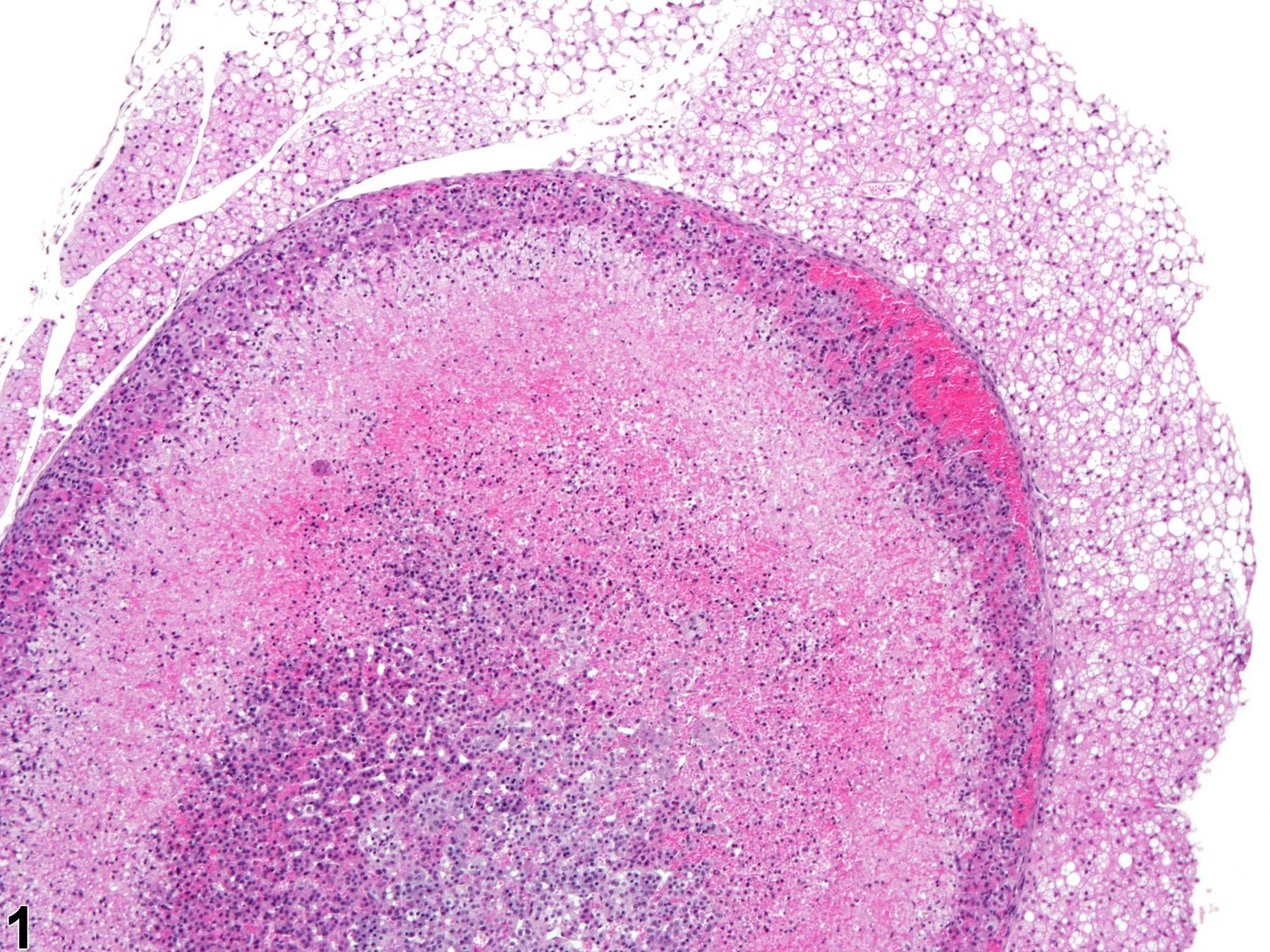
Adrenal gland, Cortex - Necrosis in a female B6C3F1 mouse from a subchronic study. Diffuse cortical necrosis involves primarily the zona fasciculata.



